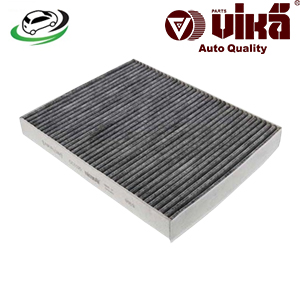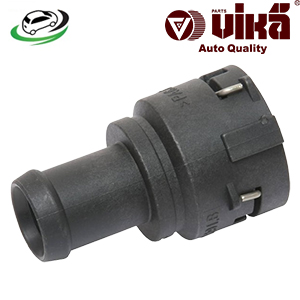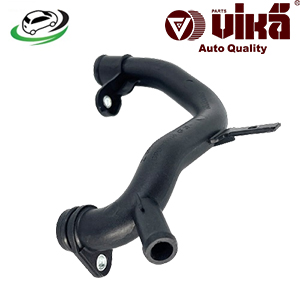-14%
Get Engine Coolant Pipe Audi A3/Q3/TT / VW CC Eos/GTI/Jetta/Passat New 06J121065F
The engine coolant pipe is an integral part of a vehicle’s cooling system, playing a crucial role in regulating engine temperature and ensuring optimal performance. This pipe facilitates the flow of coolant between various components of the cooling system, including the engine, radiator, and heater core. Understanding its function, types, benefits, and maintenance can help you keep your engine running smoothly and avoid potential issues.
Function of the Engine Coolant Pipe
- Coolant Transport:
- Primary Role: The engine coolant pipe is responsible for transporting coolant (a mixture of water and antifreeze) between the engine and the radiator.
- Mechanism: Coolant circulates through the engine to absorb heat, then flows through the coolant pipes to the radiator, where it is cooled before returning to the engine.
- Heat Dissipation:
- Primary Role: By moving heated coolant away from the engine, the coolant pipe helps in dissipating excess heat, preventing the engine from overheating.
- Mechanism: The coolant absorbs heat from the engine and releases it through the radiator, maintaining an optimal operating temperature.
- System Integration:
- Primary Role: The coolant pipe connects various components of the cooling system, including the thermostat, water pump, and heater core.
- Mechanism: It ensures a continuous flow of coolant throughout the system, allowing for effective temperature regulation and system integration.
- Maintaining Pressure:
- Primary Role: The coolant pipe helps maintain the necessary pressure within the cooling system.
- Mechanism: By securely containing the coolant and preventing leaks, the pipe supports the overall pressure and efficiency of the cooling system.
Types of Engine Coolant Pipes
- Metal Coolant Pipes:
- Description: These pipes are typically made from aluminum or stainless steel.
- Advantages: Metal pipes are durable, heat-resistant, and less prone to damage from high temperatures.
- Disadvantages: They can be prone to corrosion over time, especially if the coolant is not properly maintained.
- Rubber Coolant Hoses:
- Description: Rubber hoses are flexible and used for connecting various parts of the cooling system.
- Advantages: Rubber hoses are flexible and can accommodate movement and vibration in the engine bay.
- Disadvantages: They can degrade over time due to exposure to heat and chemicals, leading to cracks and leaks.
- Plastic Coolant Pipes:
- Description: Plastic pipes are often used in modern vehicles and are designed to be lightweight.
- Advantages: They are resistant to corrosion and relatively cost-effective.
- Disadvantages: Plastic pipes may be more prone to cracking or breaking under extreme temperatures or pressure.
- Composite Coolant Pipes:
- Description: Composite pipes are made from a combination of materials, such as reinforced rubber or plastic.
- Advantages: They offer a balance of flexibility, durability, and resistance to extreme temperatures.
- Disadvantages: They can be more expensive than traditional materials.
Benefits of Properly Functioning Coolant Pipes
- Effective Engine Cooling:
- Benefit: Properly functioning coolant pipes ensure that the engine remains within the optimal temperature range, preventing overheating.
- Explanation: By maintaining efficient coolant flow, the pipes support the overall cooling system’s ability to regulate engine temperature.
- Preventing Engine Damage:
- Benefit: Well-maintained coolant pipes help prevent overheating and associated engine damage.
- Explanation: Overheating can cause serious engine issues, including warped cylinder heads or blown head gaskets.
- Improved Performance:
- Benefit: A properly functioning cooling system, including coolant pipes, contributes to optimal engine performance and efficiency.
- Explanation: Maintaining the right engine temperature ensures that the engine operates smoothly and efficiently.
- Extended Component Lifespan:
- Benefit: Effective coolant pipes help protect other cooling system components, such as the radiator and water pump, from excessive wear and tear.
- Explanation: By ensuring proper coolant flow and pressure, the pipes support the longevity of the entire cooling system.
- Enhanced Fuel Efficiency:
- Benefit: Proper engine cooling can contribute to better fuel efficiency.
- Explanation: An engine that operates at the correct temperature burns fuel more efficiently, leading to improved mileage.
Symptoms of a Faulty Coolant Pipe
- Coolant Leaks:
- Symptom: Visible coolant puddles or leaks under the vehicle.
- Cause: Cracks or holes in the coolant pipe can lead to leaks.
- Consequence: Loss of coolant can result in engine overheating and potential damage.
- Overheating Engine:
- Symptom: The engine temperature gauge shows higher-than-normal readings, or the engine overheats.
- Cause: A faulty coolant pipe can disrupt coolant flow, leading to overheating.
- Consequence: Overheating can cause significant engine damage and reduced performance.
- Low Coolant Levels:
- Symptom: Frequently needing to top up the coolant reservoir.
- Cause: Leaks or cracks in the coolant pipe can lead to reduced coolant levels.
- Consequence: Low coolant levels can result in overheating and potential engine damage.
- Engine Performance Issues:
- Symptom: Reduced engine performance, such as sluggish acceleration or rough idling.
- Cause: Disrupted coolant flow can affect engine efficiency and performance.
- Consequence: Performance issues can impact driving experience and fuel efficiency.
- Unusual Noises:
- Symptom: Hissing or bubbling noises from the engine bay.
- Cause: Air trapped in the cooling system due to a faulty coolant pipe can create noise.
- Consequence: Unusual noises can indicate underlying cooling system problems.
Maintenance and Replacement Tips
- Regular Inspections:
- Tip: Periodically inspect coolant pipes for signs of wear, damage, or leaks. Check for visible cracks, corrosion, or coolant residue.
- Frequency: Inspections should be part of routine vehicle maintenance, typically during oil changes or service intervals.
- Timely Replacement:
- Tip: Replace faulty or damaged coolant pipes promptly to prevent overheating and potential engine damage.
- Indication: Replace pipes if there are visible signs of damage, leaks, or persistent cooling system issues.
- Use Quality Parts:
- Tip: Choose high-quality coolant pipes that meet or exceed OEM specifications for your vehicle.
- Reason: Quality parts ensure reliable performance and durability, reducing the risk of future issues.
- Professional Assistance:
- Tip: Have a professional mechanic inspect and replace coolant pipes if you are unsure about the process or if complications arise.
- Reason: Professional assistance ensures proper installation and function of the coolant pipes.
- Check Coolant Levels Regularly:
- Tip: Monitor coolant levels and top up as needed. Regular checks can help identify potential leaks or issues early.
- Reason: Maintaining proper coolant levels ensures optimal engine temperature regulation and system performance.
- Keep the Cooling System Clean:
- Tip: Regularly flush and refill the cooling system according to the manufacturer’s recommendations.
- Reason: Proper maintenance helps prevent corrosion and deposits that can affect the coolant pipes and overall system performance.
- Monitor Engine Temperature:
- Tip: Pay attention to engine temperature and address any signs of overheating promptly.
- Reason: Monitoring temperature helps identify cooling system issues early and prevents potential engine damage.
Follow us on Facebook for more parts.



